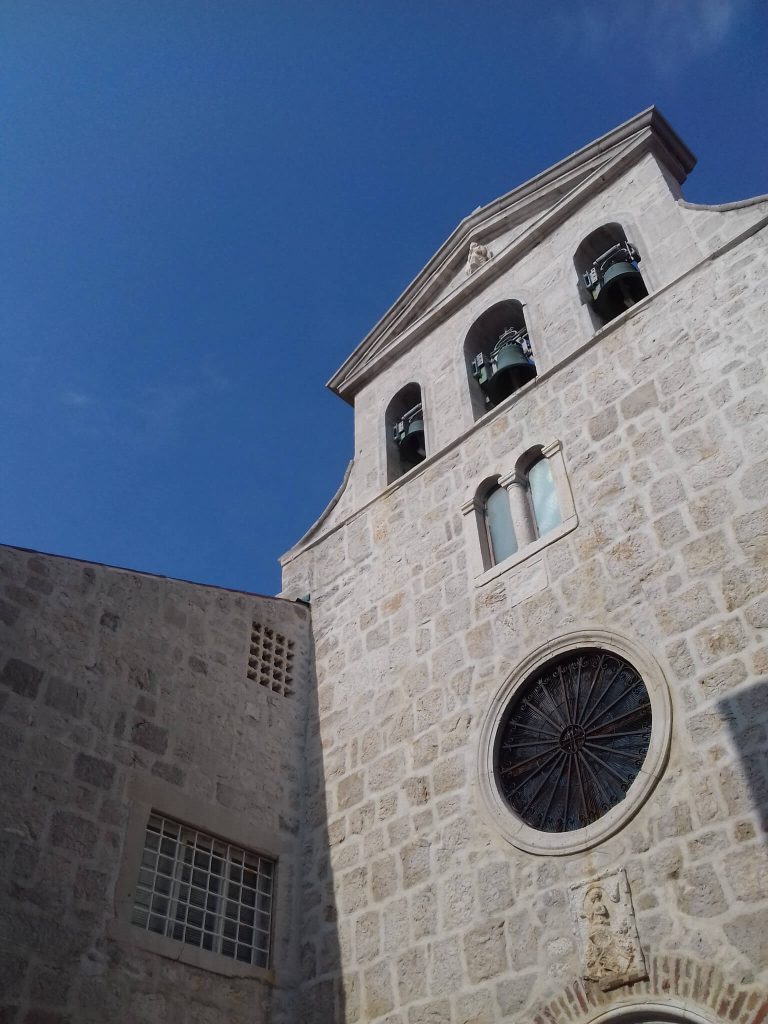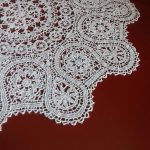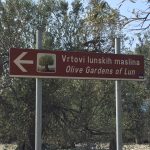April 2, 2018 – Continuing our look to Pag town’s famous features, a tribute to a particular item of UNESCO fame – the world-renowned Pag lace
In our last tribute to Pag town, we delved into its amazing history: a town built from scratch in the 15th century, its geometric urban grid formerly encircled by majestic fortification walls. It’s at this point in history that the town got its iconic works of architecture, churches and towers, solemn white giants that were glistening in the gentle spring sunlight as we made our way around.
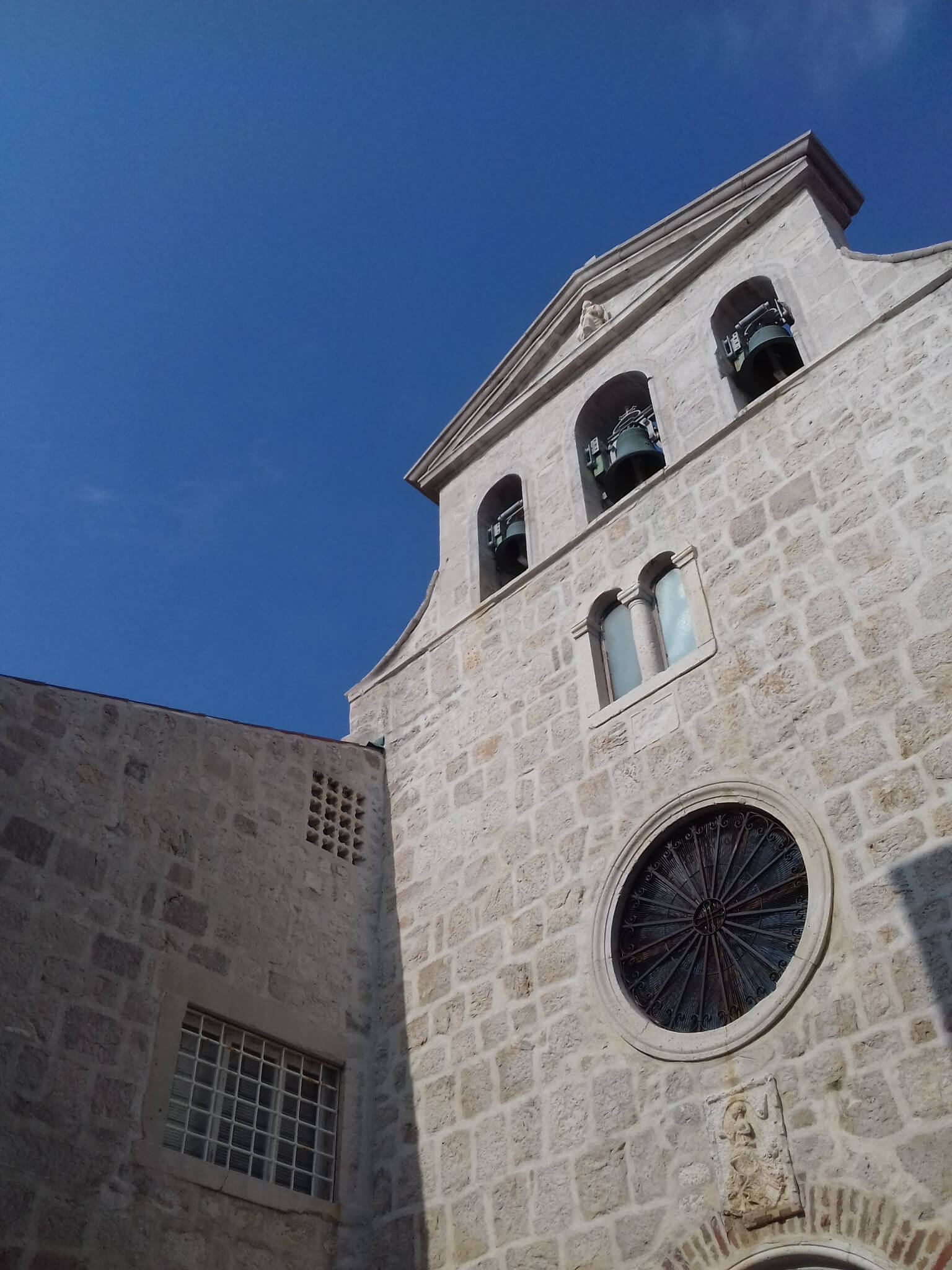
We left off in front of the Benedictine church of st. Marguerite, where the well-educated nuns held classes for countless generations of local girls. A perfect point to pass from one kind of Pag’s white roses to another, from meticulously carved rosettas and stone reliefs to intricate floral motives woven in blinding white thread. Pag lace, a world-renowned artistic wonder, delicate bouquets blooming to life in the skilled hands of Pag women for centuries.
We can trace the origins of this stunning craftwork back to the 15th century when it was first mentioned in historical documents, alongside the Benedictine nunnery in Pag town. It was the Benedictines who helped popularise the lace, selling it to prominent buyers from Venice and Vienna and thus spreading the word around Europe.
SpeedyGonsales / Wikimedia Commons
This traditional skill probably dates back much earlier than the 15th century; some believe its origins can be traced to the ancient Mycenae in Greece. Regardless of its place of birth, it’s safe to assume this type of lace-making originates from the ancient textile handcraft of the eastern Mediterranean, finding its way to Pag island at some point in time. Nevertheless, it was the Renaissance when the iconic lace slowly started to take its present shape. Once when the vibrant, jewel-like medieval displays of colour gave way to the clean, pure forms of the new artistic style, white linen became an ideal foundation for further development of textile, including clothing and other items for everyday use – a perfect canvas, so to speak.
Looking to that angular grid of Pag town, one could say the famous lace was modeled after the town itself: it’s known for its strictly geometric forms and absolute symmetry. Starting from the centre and working they way outward, the lace-makers of Pag weave their patterns as if they are creating a spider web with needle and thread. The most impressive thing about this craft – as the end result weren’t breath-taking on its own – is the fact that the lace-makers don’t rely on a stencil or any kind of visual model as they work, instead mustering up magic from thin air, sticking to traditional patterns they were once taught by their mothers and grandmothers.
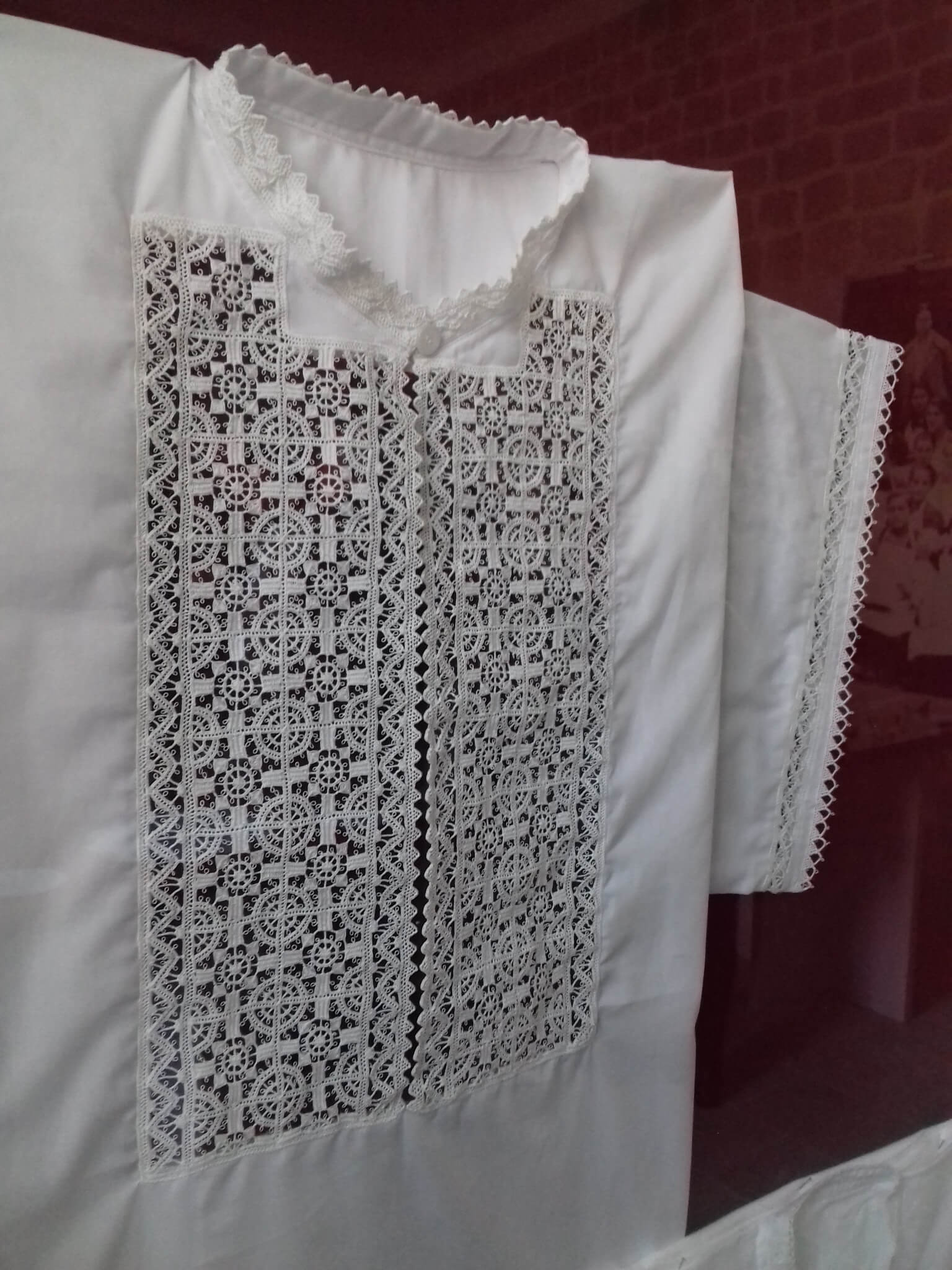
The oldest known type of Pag lace is called reticella (retičela in Croatian), a traditional pattern featured on folklore costumes. A rectangular shape is first cut out in the white linen, then woven through with a basic web-like pattern that serves as a sort of a frame to be filled with intricate lacework. The result is a truly a gorgeous display, an item of clothing that usually made its way into a local girl’s dowry:
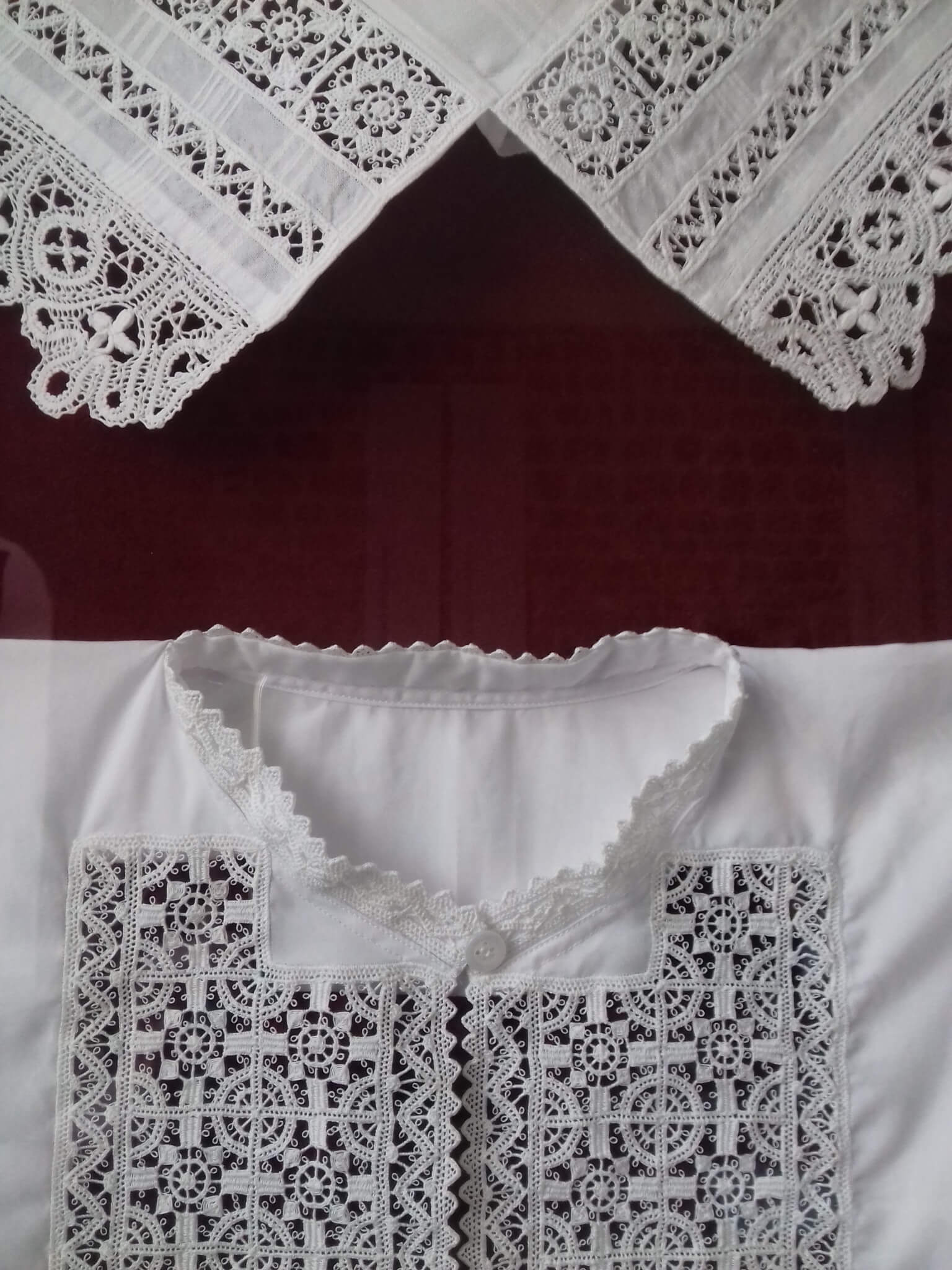
This type of work is called paški teg – roughly translating to handwork of Pag’s women. It’s usually featured as a decorative pattern on the front of blouses and on the hem of traditional headscarves. A meticulous, precise, painstaking process calling for a good deal of patience and clean, steady hands.
At the turn of the 20th century, Pag lace finally found its ground, rising above the status of decorative patches featured on items of clothing. In 1906, Pag mayor Frane Budak founded the Lace-making school and proclaimed the Pag lace a standalone craft, unrelated to items such as curtains, bed covers and sheets, handkerchiefs, and other similar objects for everyday use. The school was active for some 40 consecutive years, until 1945; after a somewhat shaky period, it was re-established in 1994 within the High School Bartul Kašić in Pag. Between 1904 and 1943, Pag lace was displayed at numerous exhibitions around the world, including London, New York, Budapest, Belgrade, Vienna, Milan, Prague and Paris.
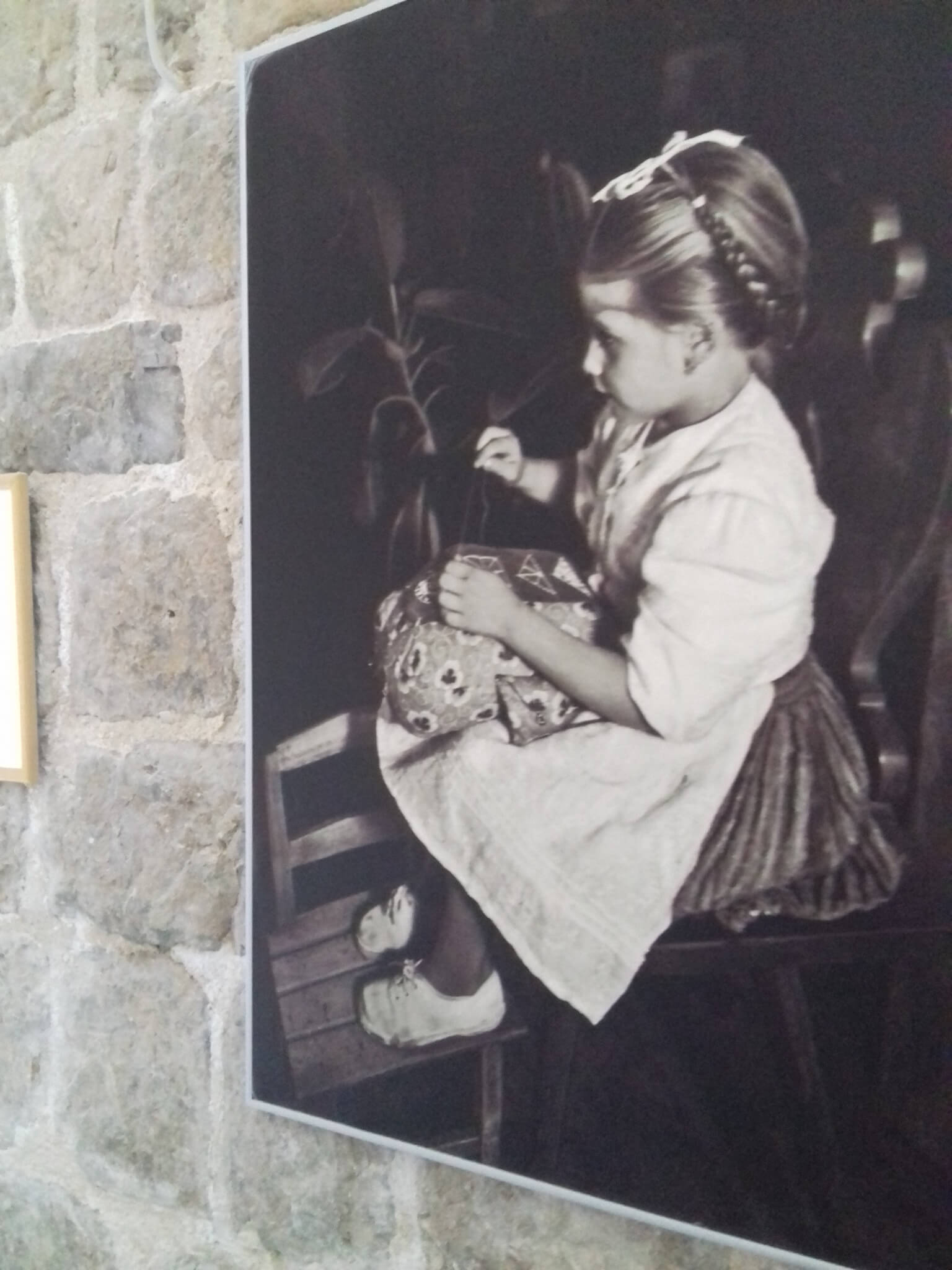
Making Pag lace has a sort of a genetic character to it. The lace-makers are taught the skill from the earliest age, building their way up through increasingly complicated patterns, memorising them for later use. It’s a never-ending process: the local guide told us about a relative of his who started making lace when she was 4 or 5 years old; some 80 years later, she found herself musing over a certain pattern, annoyed at her inability to ‘crack’ it, then finally caving in and calling a childhood friend for help. Imagine practising a certain craft for an entire lifetime, the skill basically ingrained in your fingers, hundreds of filigree works of art to your name, and still coming across a challenge every now and then.
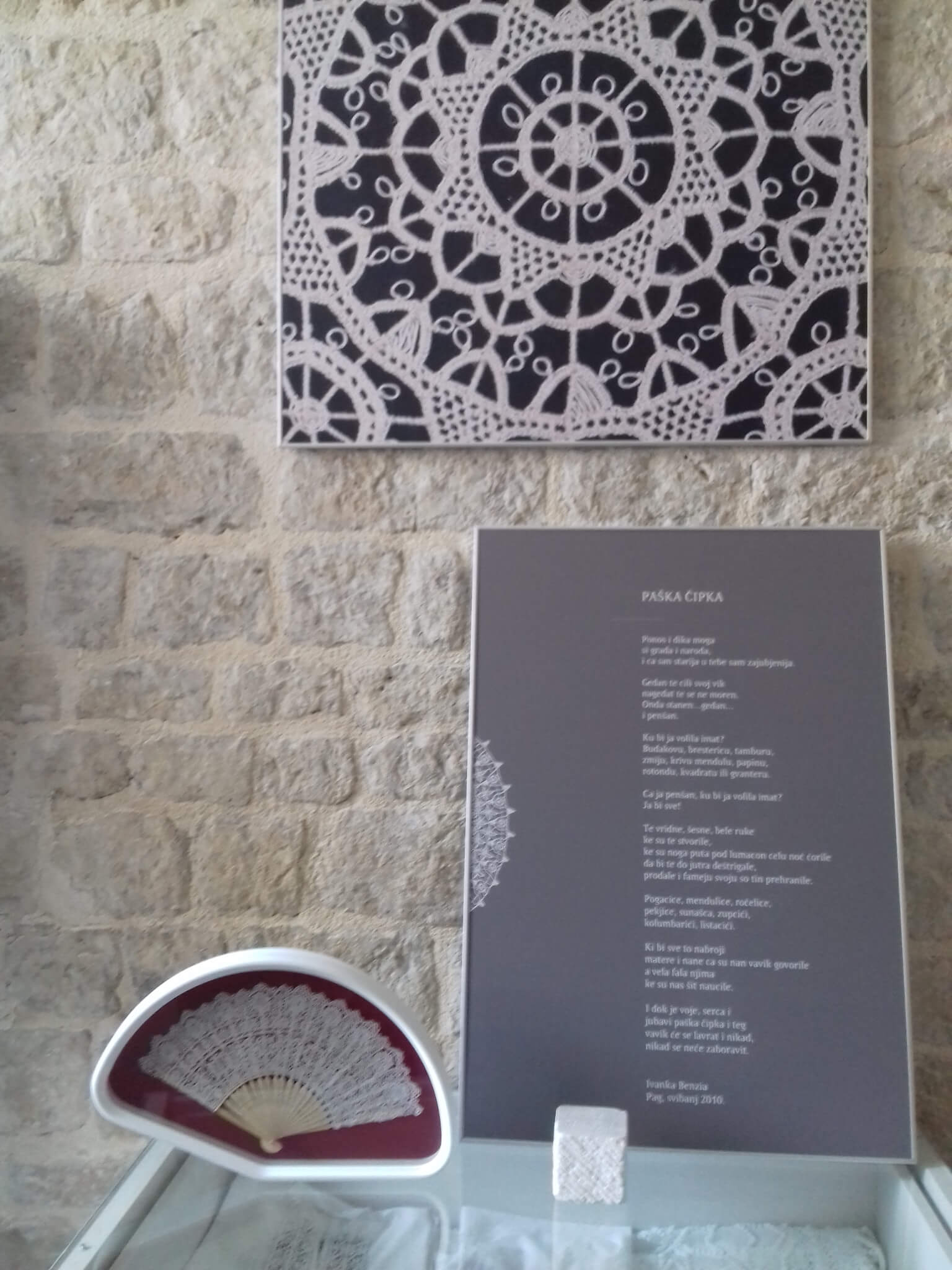
Pag lace was inscribed on the UNESCO list on Intangible Cultural Heritage in 2009, along with Lepoglava and Hvar lace. It’s known as one of the most popular souvenirs indigenous to Pag island, but it’s kind of sacrilegious to call this precious work a souvenir, placing it among the likes of postcards and magnets. It’s truly an art in its own right, an integral part of the island’s history, a craft practised for at least 600 years. Pag town houses a Lace museum, a charming little venue located in a historic palace on the main square – pop by for a visit to admire a display of incredible doilies and traditional clothing.
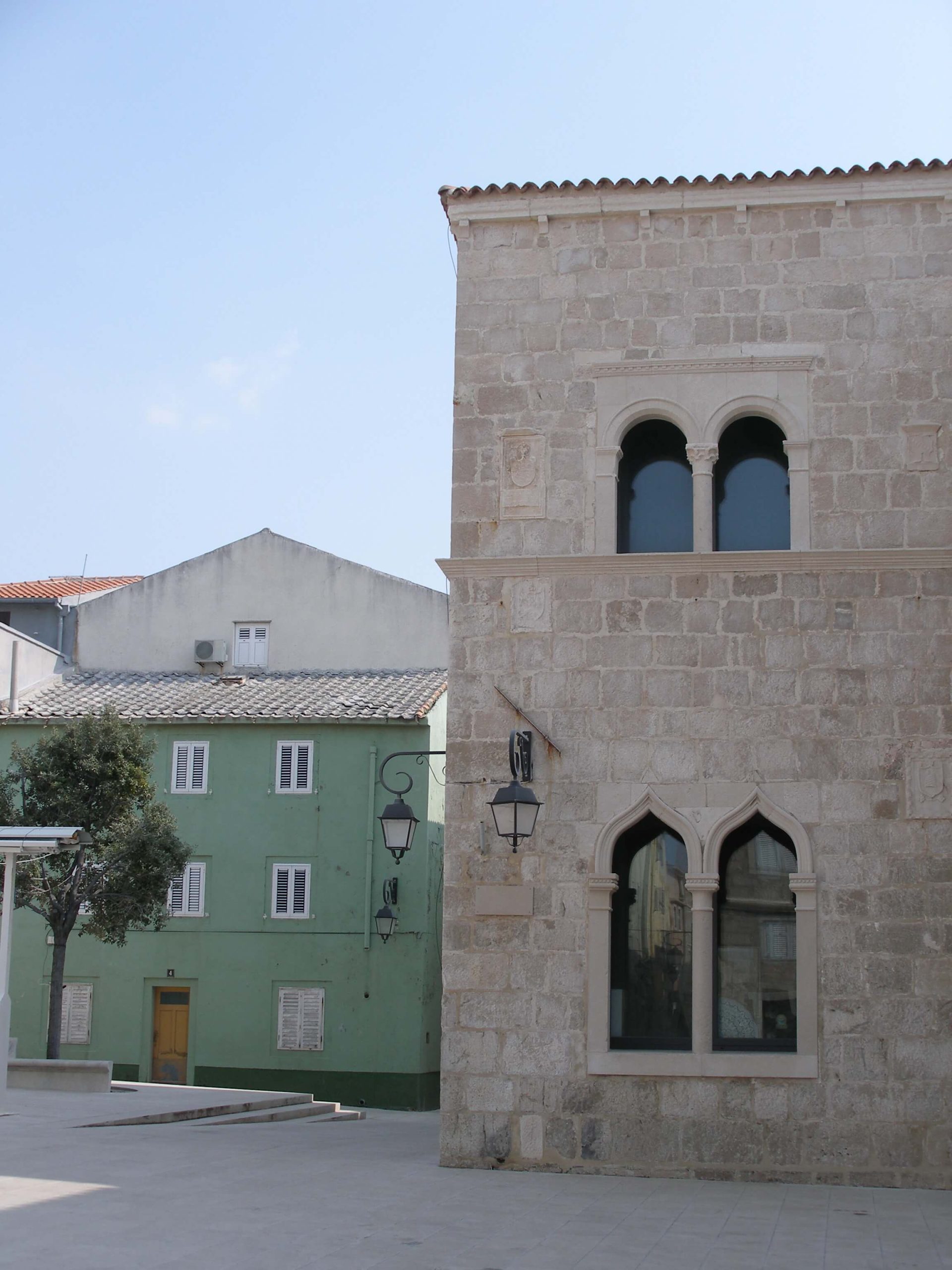
As you’re making your way around town in summer months, you just might come across a local lady sat in front of her house door, creating yet another intricate floral pattern. Stop for a moment, observe this fascinating process, and you’ll understand why Pag lace is also known as white gold.

